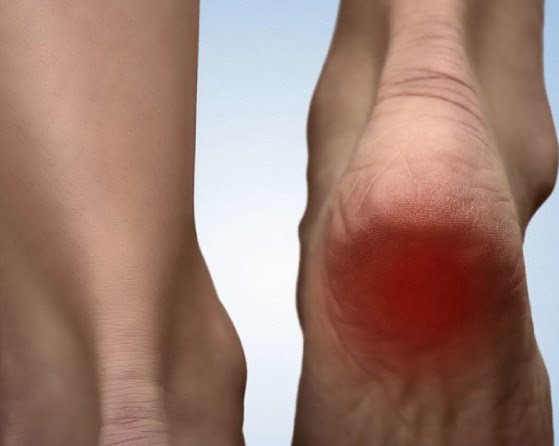CAUSES OF HEEL PAIN
PLANTAR FASCITIS AND FASCIOSIS – Thickening or inflammation of the plantar fascia can lead to plantar fasciitis which is probably the most common cause of heel pain encountered in clinical practice. In chronic cases, where degeneration sets in it leads to fasciosis. Patient classically describes more pain after a period of inactivity like sleep. Symptoms tend to get better during the day with activity again tending to worsen at night.
FAT PAD SYNDROME – This presents as central heel pain in the elderly( usually diabetic) due to atrophy of the fat pad. It is not characterized by morning.
CALCANEAL/ HEEL SPUR – Bony out growths can often lead to plantar fasciitis and heel pain.
Calcaneal Bursitis( POLICEMAN’S HEEL) – This manifests as burning, throbbing and aching type of pain accompanied by pain, swelling and erythema of the posterior heel.
BOXTER’S NERVE ENTRAPMENT – Pain is usually distributed more proximally and dorsally and is usually present without any sensory disturbance
MEDIAL CALCANEAL NERVE COMPRESSION – Presents with altered sensation on the medial side of the foot. This occurs due to entrapment of the medial calcaneal nerve in the tarsal tunnel. Tinnel’s sign is positive.
SERONEGATIVE ARTHROPATHIES – Usually bilateral in presentation. A careful history must be taken to note any associated history of back pain, urethritis, uveitis and elevated blood inflammatory markers.
SEVER’S DISEASE – This condition usually seen in the adolescents, is also known as calcaneal apophysitis. Pain is due to inflammation of the growth plate and usually responds well top rest and limitation of activities.
SPINAL STENOSIS AND L5- S1 NERVE ROOT IRRITATION – Heel pain is mostly associated with symptoms of sciatica.
TUMORS[ rare] – These present with constant pain even at nest and commonly exhibit nocturnal flare ups of pain. Usually associated with other constitutional symptoms.



